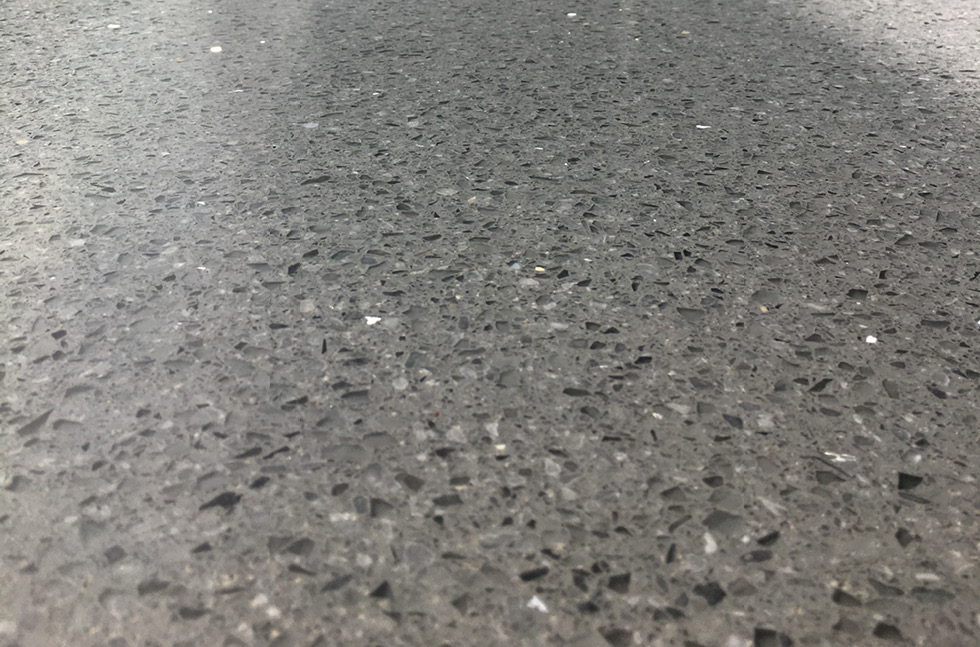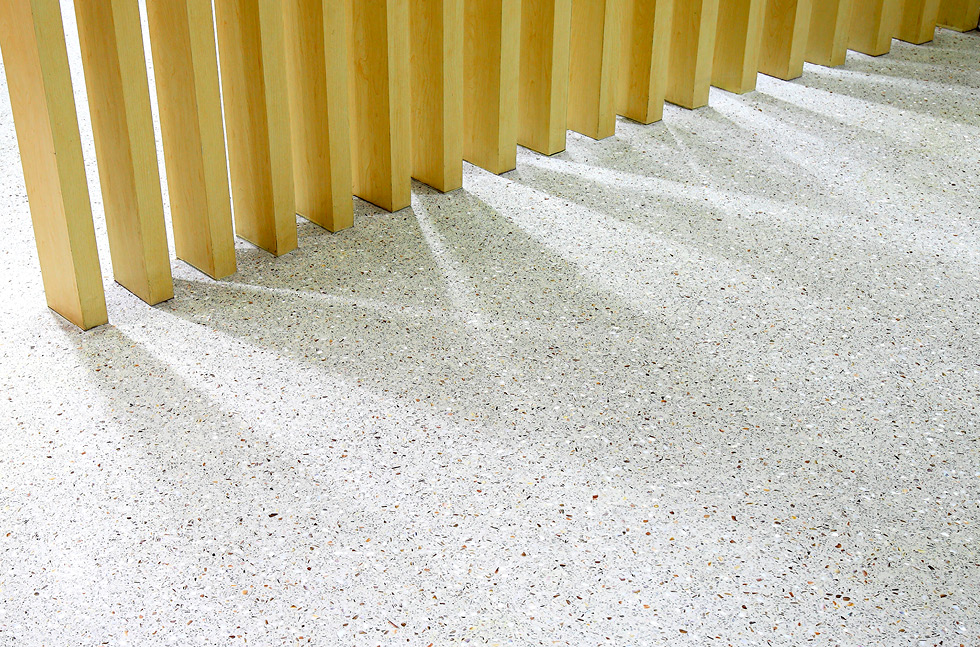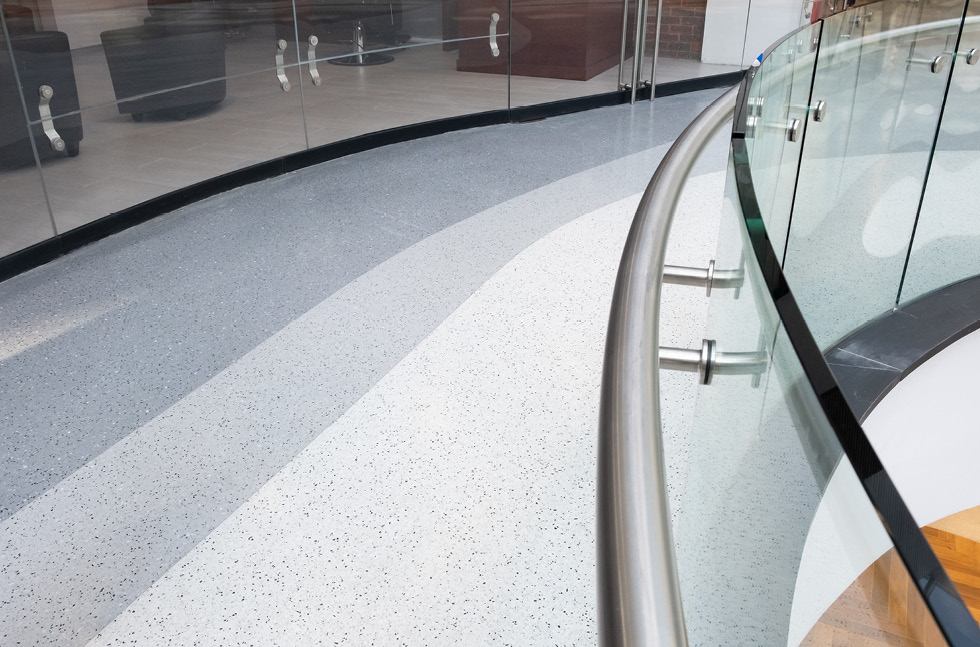We are reminded in nearly every aspect of our life to recycle, whether through the recyclable symbol on food packaging, the reduction of single-life plastics in retail or horror stories about our dying planet on social media.
With the issue being so widely and openly discussed, it is making it easier and easier to do our bit to reduce, reuse and recycle – even when it comes to interior design.

Choosing terrazzo flooring is a great way to use recycled materials
In fact, here at All Things Flooring we have been thinking a lot about recycled flooring materials, and how recycling materials helps to reduce waste, with no adverse affect on the quality or life expectancy of the flooring. A great way to do this is by opting for terrazzo flooring.
Reuse
The history of terrazzo dates back over five hundred years. Whilst some sources suggest that it can be traced back to the ancient mosaics of Egypt, its predecessors are said to be resourceful Venetian mosaic workers, who found a useful way to reuse marble remnants by incorporating them into other flooring systems.

Aggregates of different shapes and materials can be seen clearly here
Even now, just 17% of seamless terrazzo flooring is made up of processed epoxy resin binders whilst the remainder includes naturally occurring or recycled aggregates as well as pigments and fillers.
In fact, up to 60% of a terrazzo floor’s composition can be aggregate content, all of which can represent pre or post-consumer waste including recycled clear, coloured and mirror glass clippings as well as granite, flint, marble and mother-of-pearl chips from stone-processing plants.

Up to 60% of a terrazzo floor can be aggregate content
Robust
With many ancient terrazzo floors still in service today, it is a real testament to the durability and longevity of the material as a floor covering solution.
These days, epoxy terrazzo is ideal for commercial, industrial and institutional facilities, especially where durability, sustainability and minimal maintenance are crucial. This flooring solution is often used in areas with high traffic levels combined with the requirement for a decorative finish that is easy to clean and maintain.

Different shades can be used together seamlessly
The low maintenance aspect of the terrazzo material can also lead to significant energy savings over time. Whereas floor coverings such as carpet, tiles or vinyl require energy intensive vacuum or steam cleaning on a regular basis, the best method for cleaning epoxy flooring is using a dry and damp mop alongside the occasional spray buff.
Recycled
Recycled aluminium strips can also be used to complete any design work. These are most often used to separate colours when multiple colours of terrazzo are being used, or to create intricate patterns.
As well as helping to keep waste low, the National Terrazzo & Mosaic Association (NTMA) found that epoxy terrazzo offered clients the lowest lifecycle cost of any floor finish resulting from its durability, low maintenance requirements and minimal need for repair or replacement. This makes it good for the environment and your bank account!
If you would like any more information on terrazzo flooring, give us a call, we’d be happy to help.
2 thoughts on “Robust, Reused, Recycled: Terrazzo Flooring”
Comments are closed.






Any advice on flooring contractors in East Africa? I am working on a hospital project for an NGO in Burundi that needs some 1500m2. Failing that, someone who might be able to direct me to a willing adviser on how to obtain materials and lay with our own labour resource.
Hi Andy
Thanks for your message. We’ve passed your details on to our experts in the East Africa area who should be able to help out with this.
Kind regards,
Dan